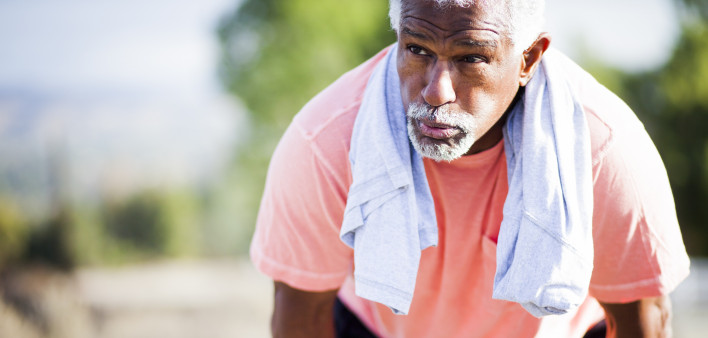Older people with HIV may have a harder time gaining muscle mass from exercise programs compared with their HIV-negative counterparts, the National AIDS Treatment Advocacy Project reports.
Presenting their findings at the IDWeek meeting in Washington, DC, earlier this month, researchers at the University of Colorado conducted a study of 27 HIV-positive and 28 HIV-negative sedentary individuals 50 to 75 years old. They engaged the participants in a 23-week supervised moderate- to high-intensity cardiovascular and resistance exercise program, scheduled three times per week.
To participate in the study, the people with HIV needed to have taken antiretrovirals (ARVs) for at least two years, have had a fully suppressed viral load for two years or more and have a CD4 count above 200.
Ninety-three percent of the participants were men, and 80% were white. The median age in the HIV-positive group was 56 years old compared with 60 years old in the HIV-negative group; this difference was not statistically significant, meaning that on a statistical basis, the two ages were comparable. The people with HIV had been diagnosed with the virus a median of 23 years ago, had taken ARVs for a median of 17 years and had a median CD4 count of 546. They all had a viral load below 50.
In the HIV-positive and HIV-negative groups, 20% and 8% were on testosterone, respectively, while about 45% in both groups were on a cholesterol-lowering statin.
According to the Veterans Aging Cohort Study (VACS) index, 59% of the HIV-positive group and 25% of the HIV-negative group had a score above 20, meaning they had an estimated 20% risk of dying within five years. This finding was an indication that the people with HIV had a greater burden of other health conditions compared with those without the virus.
According to DXA scans conducted before their engagement in the exercise program, those in the HIV-positive group, compared with their HIV-negative counterparts, had a lower median body mass index, or BMI, (26.9 versus 29.6; between 25 and 29.9 is overweight) and less total fat mass (45.4 versus 60 pounds).
The measurements between the two groups were comparable for their visceral fat area, or the volume of fat surrounding the organs (184 versus 211 cubic centimeters); total lean body mass, or muscle mass (127.8 versus 132.3 pounds); and appendicular lean mass adjusted for height, a measurement of skeletal strength of the lower limbs used to predict the risk of hip fracture (8.6 versus 8.9 kilograms per square meter).
Following the end of the exercise program, after adjusting the data to account for differences among the participants in their age and their adherence to the exercise program, the study authors found that those in the HIV-negative group had a statistically significant increase in lean mass (meaning the gain is unlikely to have been driven by chance) of 1.76 pounds. Those in the HIV-positive group, had a non-significant increase of 1.32 pounds. Shifts were almost statistically significant among, and also comparable between, those in the HIV-positive and HIV-negative groups in appendicular lean mass (0.14 versus 0.15 kg/square meter gain), total body fat (4.4 pounds versus 2 pounds loss) and visceral fat area (17.7 versus 10.3 cubic centimeter loss).
Adherence to the exercise regimen was a significant predictor of declines in total fat mass and visceral fat area. A higher frequency of additional health conditions in those with HIV did not explain why they gained less lean mass than those without the virus.
The study authors proposed that older people with HIV may need to engage in more resistance exercise than their HIV-negative peers to promote muscle growth.







Comments
Comments